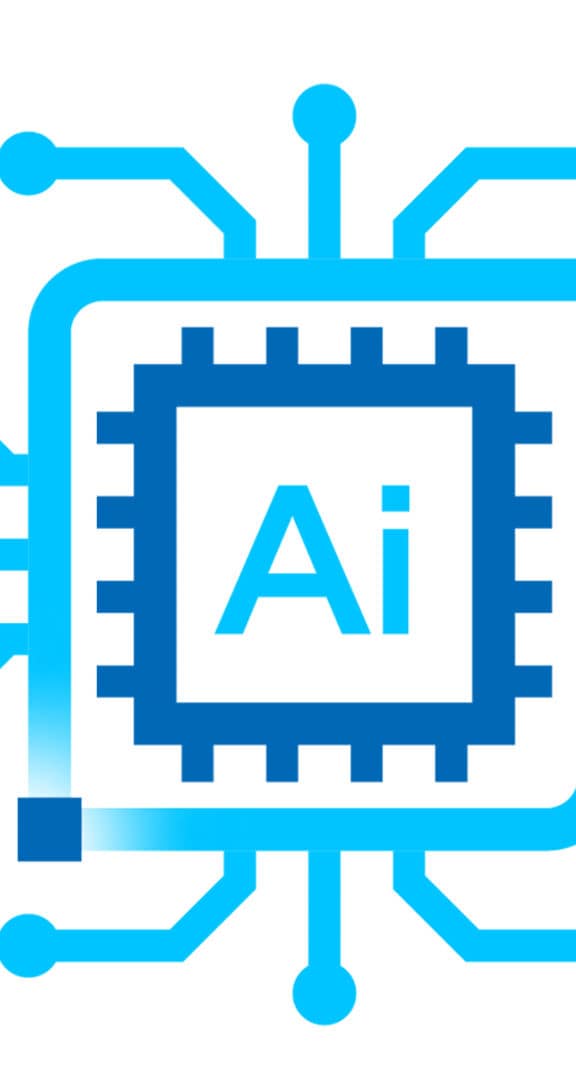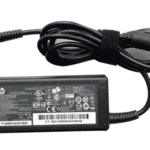Speculation surrounding a potential “Gaudi 4” AI accelerator from Intel has been effectively put to rest. Despite industry chatter and expectations of a follow-up to Gaudi 3, Intel has officially concluded the Gaudi product line and is pivoting in a new strategic direction for its artificial intelligence hardware roadmap. Rather than continue developing discrete AI accelerators, the company is embracing a broader vision: building rack-scale AI infrastructure designed for next-generation data centers.
From Gaudi to Jaguar: Intel Redefines Its AI Ambitions
The Gaudi 3 accelerator, which Intel unveiled in 2024 and is rolling out through 2025, marked the final entry in the company’s standalone AI chip series. Originally launched as a challenger to NVIDIA’s H100 and AMD’s Instinct MI300, Gaudi 3 found success in specific cost-sensitive use cases thanks to competitive performance-per-dollar metrics and lower power requirements. However, Intel’s long-term play is no longer about beating NVIDIA in the discrete GPU space—it’s about system-level innovation.
Enter Jaguar Shores, Intel’s next-generation AI platform, expected to launch in 2026. Rather than being a direct successor to Gaudi, Jaguar Shores represents a paradigm shift: it’s a rack-scale system integrating compute, networking, and memory into a unified infrastructure tailored for large-scale AI workloads. This pivot aligns with broader industry trends favoring tightly integrated solutions that are easier to deploy, scale, and maintain.
Jaguar Shores: What We Know
- Not a Gaudi 4: Jaguar Shores is not a continuation of the Gaudi family but a new platform entirely, designed for rack-level deployments rather than PCIe cards.
- 2026 Target: Jaguar Shores is currently on Intel’s roadmap for a 2026 launch and is being designed specifically for data center AI workloads like training large language models (LLMs) and running inference at scale.
- Integration over Modularity: Unlike Gaudi accelerators, which were drop-in cards, Jaguar Shores is expected to offer deep integration with Intel’s Xeon CPUs, CXL memory expansion, and custom networking fabrics.
- Falcon Shores Shelved: Intel’s previously announced Falcon Shores, a planned fusion of CPU and GPU cores, has been reclassified as an internal development platform. It will not see commercial release.
Intel’s AI Strategy in a Competitive Landscape
Intel’s decision to end the Gaudi line reflects a growing understanding that the future of AI computing lies in full-stack, tightly coupled solutions. As the demand for generative AI models explodes, large cloud providers and enterprises are moving away from individual accelerators in favor of systems designed holistically from the ground up. Jaguar Shores aims to deliver that kind of turnkey capability.
Meanwhile, competitors are gearing up for their own next-gen AI solutions. NVIDIA is preparing to launch its Rubin platform in 2026, a follow-up to the Blackwell architecture. AMD’s Instinct MI400 series is also expected around the same time. These platforms are likely to push the boundaries in compute density and AI throughput, but Intel’s edge may lie in its ability to unify its CPUs, accelerators, and interconnects into a seamless AI infrastructure offering.

Why Gaudi 4 Isn’t Happening
- Software Ecosystem Gaps: Despite competitive hardware, the Gaudi line struggled to gain developer adoption due to limited framework support compared to NVIDIA’s CUDA ecosystem.
- Shifting Market Needs: Major customers like hyperscalers are prioritizing complete AI stacks over piecemeal solutions. Gaudi 4 would have entered an increasingly niche market.
- Intel’s Reallocation of Resources: By redirecting R&D and manufacturing capacity toward Jaguar Shores and future Xeon platforms, Intel is optimizing its roadmap around where the growth is headed—system-level AI infrastructure.
Intel’s Rack-Scale Vision: A System-Level Approach
Jaguar Shores is more than a single chip. It’s a convergence of technologies Intel has been developing for years, including Compute Express Link (CXL) for shared memory access, chiplet-based Xeon CPUs for AI inferencing, and Ethernet-based AI fabrics for low-latency interconnects. This approach aims to reduce bottlenecks in AI training pipelines by colocating processing power and memory bandwidth in a way traditional GPUs cannot easily replicate.
| Component | Role in Jaguar Shores |
|---|---|
| Xeon 6 CPUs | Handles general-purpose compute and smaller AI workloads |
| AI Accelerators | Dedicated units for training and inference (not branded as Gaudi) |
| CXL 2.0 Memory | Enables shared access across CPU and AI chips |
| High-Speed Fabric | Custom networking to link nodes at rack scale |

Looking Ahead to 2026 and Beyond
As AI models become more complex and resource-hungry, chipmakers are being forced to think beyond silicon. Intel’s Jaguar Shores reflects that shift. While we won’t see a Gaudi 4, the company is doubling down on AI—just in a more integrated, infrastructure-driven way.
Whether Jaguar Shores can succeed against NVIDIA’s Rubin or AMD’s MI400 will depend on more than raw specs. Intel will need to prove it can deliver on software support, scalability, and total cost of ownership. But by moving beyond accelerators and into systems, it’s at least playing a different—and potentially smarter—game.
Intel’s Future Ai Chips
Intel’s AI accelerator roadmap has taken a decisive turn. While earlier speculation hinted at a follow-up to the Gaudi 3 chip—dubbed “Gaudi 4”—new information confirms that the Gaudi product line is officially being retired. Instead of continuing with standalone accelerators, Intel is shifting its focus toward integrated, rack-scale AI systems, with a new architecture called Jaguar Shores set to debut in 2026.
The change in strategy follows Intel’s announcement of Gaudi 3, expected to launch in the second half of 2025, which offers improvements over its predecessor but marks the final generation in the Gaudi series. The company has now canceled its planned Falcon Shores chip, which was once envisioned as a hybrid GPU/AI accelerator, and is repositioning itself in the AI infrastructure space.
Intel’s Strategic Pivot: From Gaudi to Jaguar Shores
Instead of releasing a Gaudi 4, Intel is building out Jaguar Shores, a rack-scale architecture that integrates compute, memory, and networking for AI at the system level. This approach aims to deliver holistic solutions for data centers, emphasizing scalability, efficiency, and interoperability—rather than competing chip-to-chip against NVIDIA or AMD.
Jaguar Shores will leverage Intel’s expertise in CPUs (Xeon), memory interconnects (CXL 2.0), and networking (via Ethernet and Infiniband alternatives) to provide an all-in-one AI infrastructure optimized for large-scale deployments. Unlike discrete GPUs, this solution is designed for tighter integration, lower latency, and streamlined deployment in enterprise and cloud environments.
Why Intel Is Retiring Gaudi
- Market Dynamics: NVIDIA dominates the AI accelerator market, especially with its CUDA software stack and upcoming Blackwell architecture. Intel’s Gaudi chips, though competitive on a performance-per-dollar basis, struggled with software ecosystem adoption.
- Ecosystem Limitations: Despite aggressive pricing and power efficiency, Gaudi accelerators lacked the deep developer support and framework integration that NVIDIA provides. Intel is now betting on broader platform solutions rather than chasing CUDA’s dominance.
- Shift in Customer Needs: Data center operators are increasingly looking for scalable, turnkey AI systems rather than piecemeal hardware. Jaguar Shores is Intel’s answer to that shift.
What Is Jaguar Shores?
Jaguar Shores is Intel’s next-generation architecture focused on delivering an end-to-end AI platform rather than a discrete accelerator. It targets hyperscalers and enterprises that need integrated compute, storage, and networking tailored for AI and machine learning workloads.
- Integrated AI Systems: Jaguar Shores combines AI acceleration, Xeon CPUs, and high-speed interconnects into a rack-level solution.
- CXL 2.0 Support: Enables memory pooling and sharing between processors and accelerators, essential for large AI models like LLMs and diffusion networks.
- Focus on Power Efficiency: Intel is optimizing energy consumption at the system level, which is crucial for sustainable data center scaling.
Comparison: Gaudi 3 vs. Jaguar Shores
| Feature | Gaudi 3 | Jaguar Shores |
|---|---|---|
| Launch Date | H2 2025 | Expected 2026 |
| Form Factor | Discrete Accelerator | Rack-Scale System |
| Target Market | Developers, Cloud Providers | Enterprise & Hyperscale AI |
| Power Efficiency | Improved over Gaudi 2 | Optimized at system-level |
| Software Support | Limited vs. NVIDIA CUDA | Full-stack Intel integration |
| Memory Architecture | HBM2e or HBM3 | CXL 2.0 + pooled DRAM |
What This Means for Intel’s AI Roadmap
Intel’s shift to rack-scale computing isn’t just about competing with NVIDIA—it’s about redefining how enterprises think about deploying AI at scale. By integrating compute, memory, and interconnect technologies, Intel hopes to create a flexible, modular platform that can support AI inference and training across a wide range of industries.
This move also aligns with broader trends in data center architecture, where modular design, disaggregated compute, and memory sharing are becoming key to managing AI workload growth. With Jaguar Shores, Intel is positioning itself as a systems-level player in AI, not just another chipmaker.
Frequently Asked Questions
Is Intel releasing Gaudi 4?
No. Intel has officially ended the Gaudi product line. Gaudi 3 will be the last accelerator in that series. Instead, Intel is transitioning to system-level AI solutions under the Jaguar Shores project.
What is Jaguar Shores?
Jaguar Shores is Intel’s new AI system platform that integrates compute, memory, and networking for AI workloads. It focuses on rack-scale infrastructure rather than individual chips.
Why did Intel cancel Gaudi 4?
Intel determined that continuing with discrete AI accelerators would not be competitive long-term against NVIDIA and AMD. Instead, they’re investing in integrated systems that deliver full-stack performance with greater efficiency and scalability.
When is Jaguar Shores expected to launch?
Intel has targeted a 2026 release for Jaguar Shores, aligning with its broader Xeon and AI roadmap. Development is already underway, with early previews expected in late 2025.
How does this affect the AI chip market?
This marks a significant change in how AI hardware is built and deployed. Rather than individual accelerators, the future may favor full-stack, modular systems that offer better total cost of ownership, energy savings, and integration with existing infrastructure.







